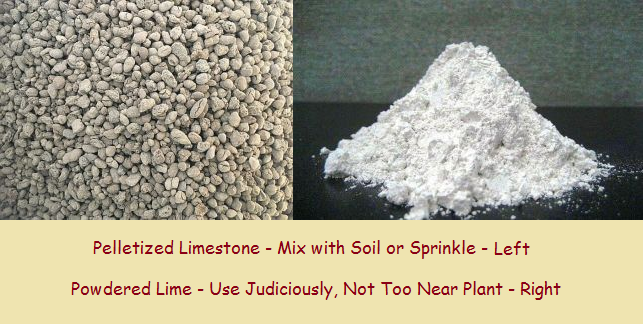
I feel certain everyone has heard, whether in the realm of gardening or in the realm of sports, the words lime and limestone. Perhaps without even consciously thinking of it, these two words have been considered by many to be synonymous. Yet they are by no means synonymous.
Lime
Lime is used in delineating the zones and yard lines of a football field. Lime is a fine white powder. It is occasionally spread thinly over lawns as well. What is lime chemically speaking? It is calcium oxide, chemical formula CaO. By slaking lime with water, one obtains, naturally, slaked lime! Slaked lime has the chemical formula Ca(OH)2. The slaking of lime is written, in shorthand,
CaO + H2O → Ca(OH)2 + Δ
The triangle or delta symbol indicates heat. Heat is produced when lime combines with water. The measure of energy produced is an indicator of the degree lime has a tendency to remove water from its surroundings. It is a powerful dehydrating agent. It is also quite alkaline. These two properties cause plants to burn when excessive lime is applied.
Limestone
Some may believe limestone is a rocky outcropping of lime, but such is not the case. Lime is not readily to be found in nature. Limestone is not the oxide of calcium, but the carbonate of calcium, CaCO3. It is actually the salt theoretically produced through the reaction of calcium and carbonic acid, H2CO3. In actuality, since metallic calcium does not occur in nature, it is more likely the product of either of the following reactions:
CaO + CO2 → CaCO3
Ca(OH)2 + CO2 → CaCO3 + H2O
Limestone can be used in gardens even in excess, without fear of harm to most plants. It is a major ingredient in many products of nature, including dolomite, marble, seashells, and chalk. It is thus far safer for the home gardener to use limestone, rather than lime.

Production of Lime
So, if lime is not prevalent in nature, whereas limestone is, how does one obtain the lime useful in sports and for gardening from limestone or from slaked lime?
It’s not all that difficult a task to undertake. Since slaking lime produces slaked lime plus energy, it is logical to think, “If I could pump more energy than what is given off into slaked lime, and I remove the water from onsite, I should be able to get back lime. And that is true. It is similar with the removal of carbon dioxide from limestone. Those reactions may be written,
Ca(OH)2 + Δ → CaO + H2O↑
and
CaCO3 + Δ → CaO + CO2↑
Note: You might also like Cement Production Aggravates Carbon Dioxide Levels

Thanks! That’s exactly what I wanted to know.